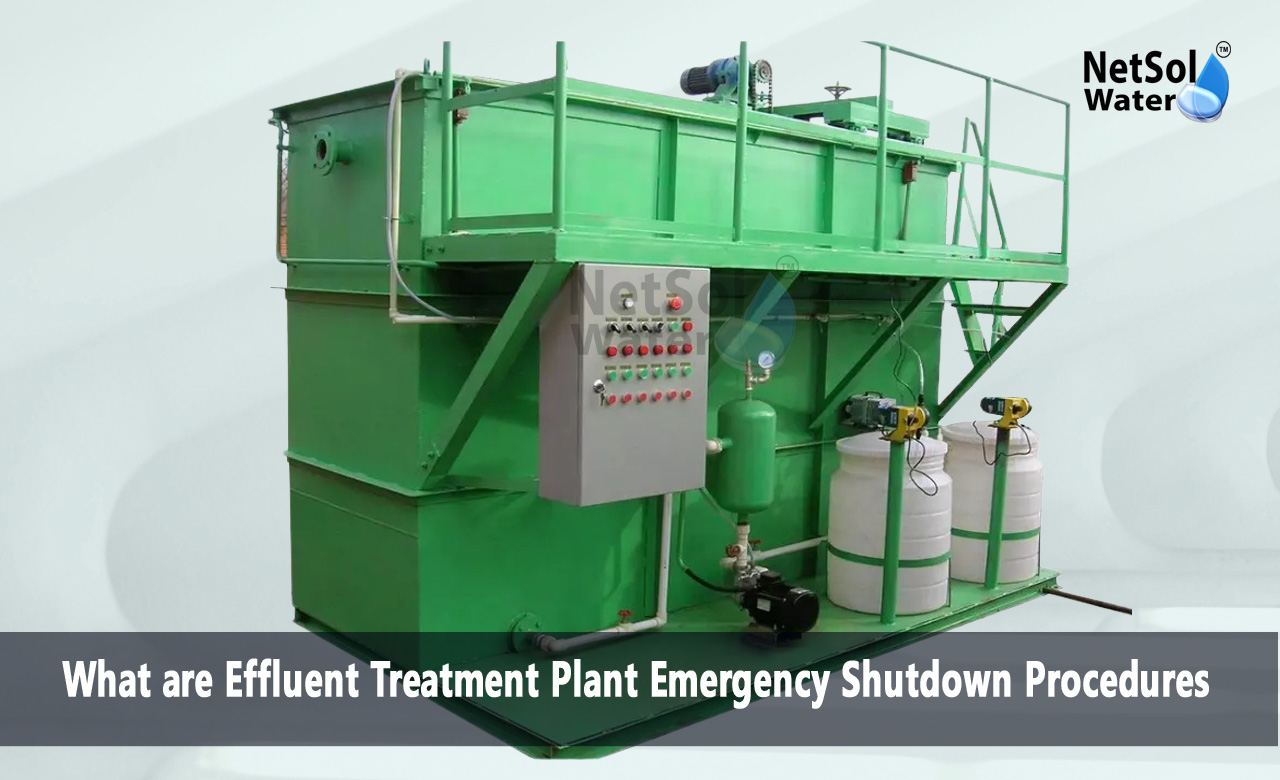What are ETP Plant Emergency Shutdown Procedures?
Industrial wastewater management sometimes goes unnoticed although effluent treatment plants play a key role in maintaining our environment and public health. These facilities treat waste water before releasing it back into nature. Even well-run treatment plants can meet emergencies necessitating emergency closure.
We will examine the stages and concerns for shutting down an effluent treatment plant in an emergency.
Basics of Effluent Treatment Plants
Effluent treatment plants process wastewater from factories manufacturing plants and other industrial sources. This water typically contains chemicals and other impurities that require treatment.
The treatment approach normally involves multiple steps. Preliminary treatment removes big debris and solids. Primary treatment uses settling tanks to separate more suspended particles. Secondary treatment breaks down organic waste by biological mechanisms. Tertiary treatment may further purify the water before release.
Various equipment and systems function throughout this multi-step procedure. Pumps filters tanks and chemical dosing systems work together to clean the water. Monitoring and control systems enable operators oversee the entire operation. Understanding how these components function is important for executing effective shutdown procedures.
Common Reasons for Emergency Shutdown of ETP Plant
Many events can necessitate an emergency shutdown of an effluent treatment plant. Common explanations include:
Equipment failure: Critical equipment malfunctions may compel operators to suspend operations.
Power outages: Loss of electricity might deactivate key systems making treatment impossible.
Chemical spills: Accidental discharge of treatment chemicals or entering pollutants may need emergency shutdown.
Natural disasters: Floods earthquakes or severe storms can damage plant infrastructure and necessitate closure.
Safety hazards: Any condition offering immediate harm to workers or the surrounding community necessitates shutting down.
Regulatory violations: Sudden failure to fulfill effluent quality criteria may trigger a shutdown.
Regardless of the cause the purpose of an emergency shutdown remains the same: to rapidly and safely terminate operations while reducing risks and environmental effect.
General Steps for Emergency Shutdown
While precise protocols vary depending on plant design and emergency nature several general actions apply in most situations:
1. Activate the emergency alarm system to alert all personnel.
2. Evacuate non-essential staff from the facility.
3. Stop wastewater inflow by closing intake valves or switching off pumps.
4. Power down critical equipment in a controlled process.
5. Secure hazardous materials or chemicals.
6. Implement containment techniques to prevent spills or leaks.
7. Notify relevant authorities and stakeholders.
8. Document all actions conducted during the closure.
These stages provide a basic framework but plants should have precise site-specific procedures in place. Every facility is unique and requires a personalized approach to emergency shutdowns.
Shutting Down Different Treatment Stages
Operators must consider particular methods for shutting down certain stages of the treatment process:
Preliminary Treatment Shutdown
In early treatment emphasis on stopping incoming wastewater flow and powering down screening equipment. Key steps include:
- Close all influent gates and valves
- Turn off bar screens and grit removal systems
- Drain and clean screenings and grit collection bins
- Secure chemical feed systems used for odour control
Primary Treatment Shutdown
For primary treatment safely terminate clarifiers and sludge handling equipment operation:
- Stop all feed pumps to primary clarifiers
- Allow solids to settle in clarifiers if possible
- Shut down sludge pumps and conveyors
- Secure chemical dosing systems
Secondary Treatment Shutdown
Secondary treatment sometimes involves biological processes requiring extra care during shutdown:
- Gradually reduce aeration in activated sludge tanks
- Monitor dissolved oxygen levels to prevent septic situations
- Stop return activated sludge pumps
- Shut off secondary clarifiers following primary clarifier processes
Tertiary Treatment Shutdown
If the plant includes advanced treatment processes like filtration or disinfection follow these steps:
- Backwash and shut down filter systems
- Turn off UV disinfection units
- Secure chemical feed systems for disinfection (e.g. chlorine)
- Stop polishing pond pumps or aerators
Sludge Treatment Shutdown
Proper sludge treatment is crucial during an emergency shutdown:
- Stop all sludge pumping and dewatering operations
- Secure anaerobic digesters if present
- Turn off sludge drying beds or other solids handling equipment
- Monitor sludge storage sites for potential odors or spills
Maintaining Safety During Shutdown
Safety should always be the main consideration during an emergency shutdown. Key safety considerations include:
Personal Protective Equipment: Ensure all staff working in the shutdown wear proper PPE including hard hats safety glasses and respirators if necessary.
Confined Space Entry: Avoid entering confined locations like tanks or pits during shutdown unless absolutely essential. Follow all confined space entry protocols if entry is required.
Chemical Handling: Take additional care when protecting chemical storage and feed systems. Be prepared to contain and clean up any spills that may arise.
Electrical Safety: Follow proper lockout/tagout procedures when de-energizing electrical equipment.
Communication: Maintain clear communication channels amongst all team members involved in the shutdown. Use radios or other gadgets to remain in touch.
First Aid: Keep first aid kits and emergency eyewash stations easily available.
Prioritizing safety avoids a bad situation from growing worse during the shutdown procedure.
Conclusion
Emergency shutdowns at wastewater treatment plants require quick thinking and careful implementation. Understanding plant operations following proper processes and emphasizing safety minimizes risks and protects workers and the environment.Every situation is unique and may necessitate altering traditional processes. With proper preparation and mindset youll be ready to handle any shutdown scenario.Effluent treatment plants serve a key role in conserving water resources. Mastering emergency shutdown protocols secures facilities and helps preserve the health of our world for future generations.
To explore customised commercial RO plants, Industrial RO plants, ETP or STP solutions for your needs in your areas and nearby regions, Contact Netsol Water at:
Phone: +91-965-060-8473, Email: enquiry@netsolwater.com



